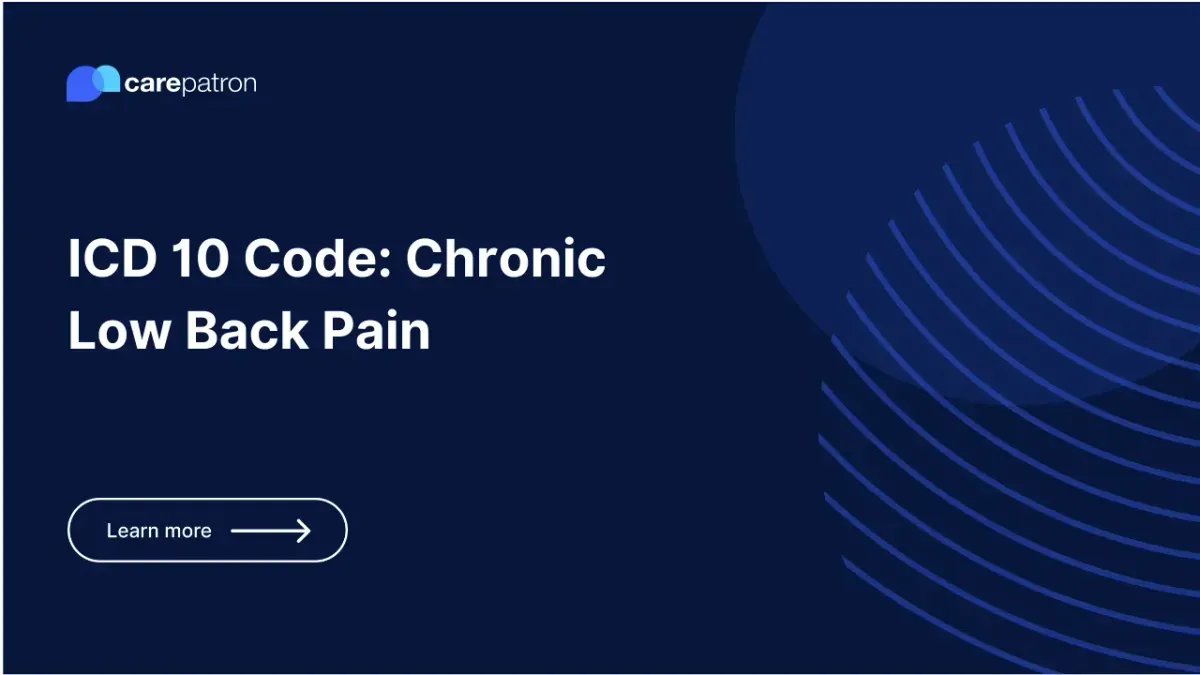
Chronic Low Back Pain ICD-10-CM Codes
Learn about the ICD-10 codes used for chronic low back pain. This includes information on symptoms, medications, treatment, and more.
Use Code
EHR and practice management software
Get started for free
*No credit card required
Free
$0/usd
Unlimited clients
Telehealth
1GB of storage
Client portal text
Automated billing and online payments
